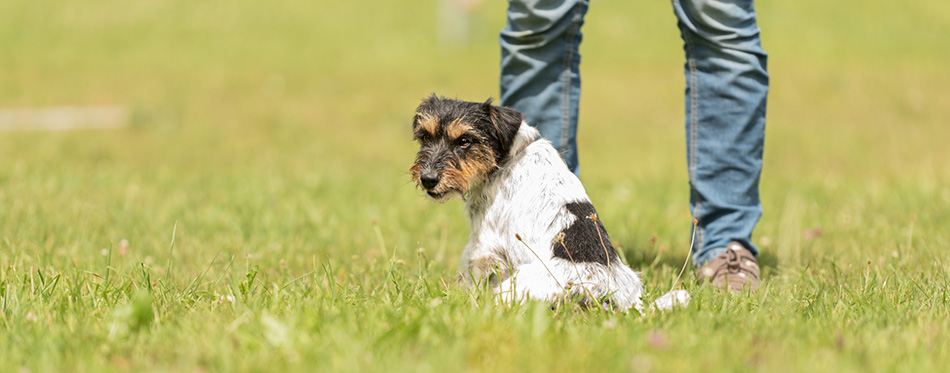Deafness is a health condition that is quite common in dogs. There are types of deafness that are hereditary in nature, while others lose their hearing because of diseases, injuries, or as side effects of certain medications. Whatever the case, hearing loss in dogs can have a negative impact on the dog’s ability to enjoy life. Their sense of hearing is very acute and for good reason. It allows them to be vigilant of their surroundings, enabling them to perform many of their tasks. So, how do you know if your dog is deaf or is only displaying a stubborn behavior? Here are 3 foolproof ways you can answer the question “is my dog deaf or stubborn?”.

Learn the Signs and Symptoms of Canine Hearing Loss
One of the easiest ways to determine the presence of hearing loss in any dog is by conducting an initial assessment. This involves the identification of signs and symptoms associated with canine deafness. Before you do this, however, it’s important to take note of your pet’s breed.
There are certain breeds of dog that are more prone to congenital deafness. This means that the puppy is born deaf. There are two types of congenital hearing loss in dogs: inherited or acquired. In hereditary hearing loss, one or both of the puppy’s parents may carry the gene that codes for the disease.
This does not mean that all dogs of this breed will have congenital hearing loss, however. For instance, you may have two dogs of the same breed and only one of them will have congenital deafness. Everything depends on the genetic makeup of the parents. If both parents have congenital deafness, then all of their puppies will have the disease. If only one of the parents has congenital hearing loss, half of the puppies will have hearing loss.
Examples of dog breeds that have a predilection to hereditary congenital deafness include the following:
- Beagles
- Dalmatians
- Poodles
- Boston Terriers
- Cocker Spaniels
- Australian Shepherds
- English Bulldogs
- West Highland Terriers
- Maltese
- Jack Russell Terriers
- German Shepherds
- Rhodesian Ridgebacks
- English Setters
- Papillons
- Shetland Sheepdogs
- Pointers
Acquired congenital hearing loss occurs because of a defect in the ears of the puppy while it is still inside the mother dog’s womb. It’s possible that some of the critical components of the puppy’s ears did not develop because of exposure to toxins. It’s also possible that intrauterine infections, medication side effects, and liver disease can produce problems in the developing puppy ears. Remember, these injuries to the puppy’s ears occur while it is still in the womb. Hence, the moment it is born, it may already have a problem with its hearing.
Remember that all puppies have an immature sense of hearing for the first 10 to 14 days of life. It’s only after this period that their ear canals start to open up and facilitate full hearing.
The next time somebody asks ‘is my puppy deaf or stubborn?’, you already have the answer to it.
One has to keep in mind that breeds that are at risk of congenital hearing loss do not mean they already have the condition. It only means that they have a greater tendency to develop canine deafness than other breeds. What this also means is that you have to check for signs and symptoms that may point to hearing loss in your dog.
The following are some of the manifestations of canine deafness:
- Bites harder than other puppies because it cannot hear the “squeals” or “cries” of its littermates.
- Last to feed because it cannot hear you “put” their food bowl on the floor.
- Responds to physical and visual cues, but not to auditory commands.
- Does not move its ears in an effort to localize sound or noise.
- Does not respond to the squeaking noises of a dog toy it doesn’t see.
Adult and senior dogs may also start losing their sense of hearing as part of the aging process. To determine if they are already deaf, you should be able to notice the following cues:
- No longer afraid of loud noises like thunderstorms, vacuum cleaner noise, or fireworks without undergoing behavior therapy. May even sleep through these noisy situations.
- No longer as obedient as it was before.
- Can get startled in an instant since it cannot “hear” approaching people.
- Does not get up from its bed to greet you at the door upon reaching home from the office.
There are other possible signs of canine deafness, but these may point to other health problems in the dog. Hence, one should always assess the following manifestations in the light of other symptoms:
- Vigorous shaking of the head
- Painful ears
- Discharge from the ears
- Foul odor coming from the ears
- Excessive barking that it didn’t do before
- Anxiety
- Timidity
Perform Home Hearing Tests
Having a list of symptoms that may point to hearing loss in dogs is never conclusive. You have to perform a simple hearing test for dogs. This will help bolster your suspicion that your dog may already be deaf. Performing a simple dog hearing test will help answer the question ‘is my dog deaf or stubborn?’
While your dog is resting, approach it from behind. Be careful as you make your approach. You do not want to create vibrations. It may not “hear” you, but it sure can “feel” the vibrations. You should also not wear any heavily-scented clothing or spritz cologne on yourself. These things can alert or notify the dog to your presence. It is also important to keep your distance from the dog. If it gets startled, it may snap at or bite you. Moreover, there is greater air movement if you are near the dog.
Once you are in position, clap your hands once. If your dog is deaf, then you will never see any reaction. It will continue with its rest. If the dog has partial deafness, it will look in the opposite direction and not from the source of the sound.
If the dog does not respond to the clapping noise, you can create louder noises. Blow a whistle or bang 2 pot lids together. Turn on the vacuum cleaner or any other appliance that can produce a loud noise. Make sure that these will not create vibrations, produce scents, or create turbulence in the airflow. Remember that in a home dog hearing test, sound is what you are evaluating.
It is also possible to take your pet for a walk. It is ideal that you do this in an empty dog park. Use your judgment in determining whether your dog is being stubborn or naughty or that it is not able to hear your commands.
If you have a well-behaved dog, it is quite easy to check if it is already deaf. If you call it by its name, it may look distressed or confused. It can walk or run around in circles as if it is already lost. It may also turn its head from one side to the other. Always look at how its ears move whenever you call its name. The ears should move in the direction of your voice. If not, then your pet may have a hearing problem.

Bring Your Dog to a Veterinarian for Professional Hearing Tests
Home hearing tests for dogs are very handy tools for determining canine deafness. However, not all pet parents are observant enough of the dog’s behaviors. Hence, if one needs a more concrete answer to the question ‘is my puppy deaf or stubborn?’, then a visit to the vet is the answer.
Many veterinarians will perform almost the same hearing tests that you performed at home. In addition to this, they will also inspect the other aspects of the dog’s ears. A thorough ear examination will include checking for swelling, discharges, or other signs of infection. These can all impair the dog’s ability to hear.
A more definitive hearing test is the Brainstem Auditory Evoked Response test or BAER Test. The machine used in the testing runs in the tens of thousands of dollars. As such, very few private veterinary practitioners have this equipment in their clinic. Hence, you can ask your vet for a referral to the nearest BAER testing center.
There are two types of BAER Tests. One is helpful in determining whether your pet is deaf or not. The second type of test provides you with a clearer picture of the level of hearing loss in your dog. Keep in mind, however, that the BAER Test does not measure the dog’s full range of hearing.
The test measures the electrical activity in that part of the brain that’s responsible for processing sound. Specialists direct sound into the dog’s ears. Electronic probes record brain activity in response to the sound produced.
Hearing loss in dogs is a normal part of aging. However, there are also those that may be born with the condition. Knowing the signs and symptoms of canine hearing loss and conducting simple dog hearing tests can help you determine if your pet is deaf or not.

